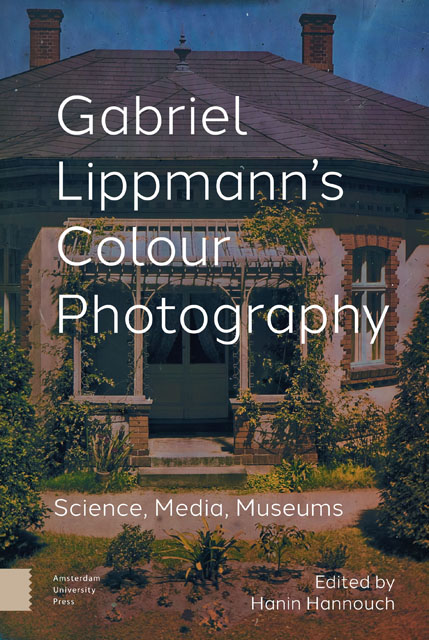Book contents
- Frontmatter
- Table of contents
- Gabriel Lippmann’s Colour Photography: A Critical Introduction
- Part I The Science of Colour Photography and the Colour Photography of Science
- Part II Media History, Aesthetics, and Culture
- Part III Contemporary Reception and Future Trajectories
- Afterword: Building Bridges over Standing Waves
- Index
5 - Lippmann Photography and the Problems of Media Historiography
Published online by Cambridge University Press: 16 November 2022
- Frontmatter
- Table of contents
- Gabriel Lippmann’s Colour Photography: A Critical Introduction
- Part I The Science of Colour Photography and the Colour Photography of Science
- Part II Media History, Aesthetics, and Culture
- Part III Contemporary Reception and Future Trajectories
- Afterword: Building Bridges over Standing Waves
- Index
Summary
Abstract
Lippmann photography is the first imaging technology to exploit waveoptical effects. It forces a revision of media-historical models, such as the approach of Jonathan Crary, which is based solely on the emergence of physiological optics around 1820. First, this leads to a differentiated model of the history of optical media. Second, Lippmann photography, through its practical obsolescence and its reappearance in discourses on security technologies at the end of the 1990s, raises fundamental questions about the relationship between media technologies and practices. The same applies to the second development in the field of optical media, which is centrally based on wave optics, namely holography. This paper aims to trace and discuss theoretically the history of knowledge of wave-optical images based on wave optics media and its implications.
Keywords: Jonathan Crary, holography, media historiography, reproducibility, wave optics
[…] waves of light which would rush through the film at an enormous speed and get away into space without leaving any impression, were stopped by some special kind of film and went surging up and down in confinement – making strata […] “supairposeetion [sic] of strata” […] no Englishman could move his hands with that smoothness, making you see. “Violet subchloride of silver.” […] When the colour photographs came, Miriam was too happy for thought.
(Dorothy Richardson 1979, 106–7)Introduction
Lippmann photography is an interesting case insofar as its existence poses interesting problems writing media history. I will show this by discussing in detail an important proposal by Jonathan Crary. He constructs the history of vision and visual media along a rupture between geometrical and physiological optics. This is one, and a particularly helpful, construction of the history of visual media (see Schröter 2014). But it has its problems – and one of those is Lippmann photography, which Crary does not even mention. The first part of this article will introduce Crary's model, and the second one will discuss its relation to Lippmann photography, making clear that his “successionist” approach does not work. The third part addresses the point that media do not simply survive or not, but sometimes come back after being forgotten – as is the case with Lippmann photography. The fourth part contains a conclusion.
- Type
- Chapter
- Information
- Gabriel Lippmann's Colour PhotographyScience, Media, Museums, pp. 133 - 158Publisher: Amsterdam University PressPrint publication year: 2022



